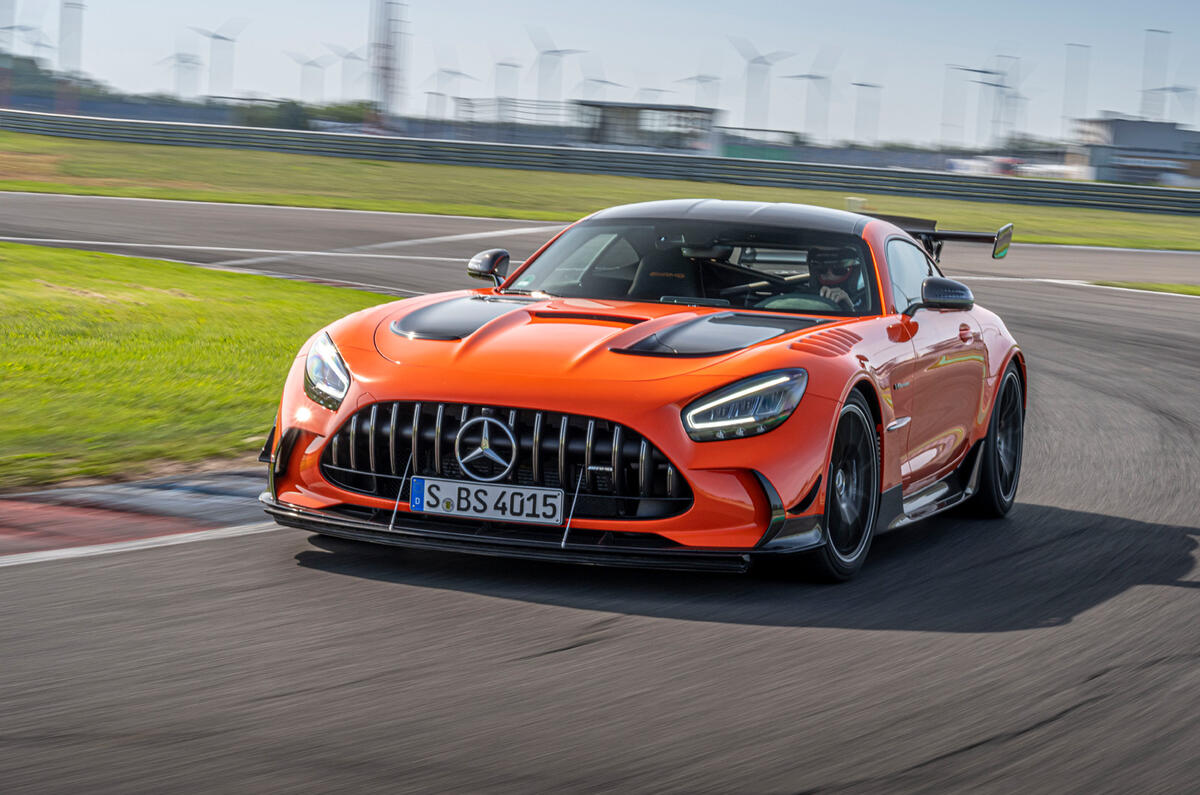Now here’s a thing. In a world where new engines are rare: a new engine. Sort of.
Mercedes-AMG’s famous cross-plane crank 4.0 V8 burbler has turned into a flat-plane-cranked V8 for the new GT Black Series. It’s one of quite the raft of measures – others include some extraordinary aerodynamics – that turn the two-seater Mercedes-AMG GT coupé into one of the most intoxicating track supercars of recent times.
Black Series models occasionally grace the top of an AMG model line. This is only the sixth so far: we had the SLK, which was pants, the CLK, which wasn’t, the SL, which was weird but cool, the C63, which was mega, and, lastly, seven years ago, the also ace SLS.
And now this, the GT, so far altered that if I hadn’t been aware it was an AMG GT, from its handling alone I wouldn’t have guessed it. So to the changes. Carbonfibre elements various make the Black Series 35kg lighter than an AMG GT R. The same aerodynamicist who developed the GT3 race car variant worked the wind-related bits. A Track Package, with titanium roll-cage and four-point harnesses, is standard (and a no-cost delete option). There are 10-spoke forged wheels, 19in front, 20in rear, and carbon-ceramic brakes. The car costs £335,000.
Then there’s the engine. What was a rumbly old cross-plane V8, deliriously engaging, has become a flat-plane V8, which means two cylinders fire at the same time. AMG has also changed, among other things, the crankshaft, camshafts and exhaust manifolds, which I suppose is obvious really. Bigger turbos with new bearings, higher boost pressure, a tweaked compression ratio and larger intercoolers also feature.
























































